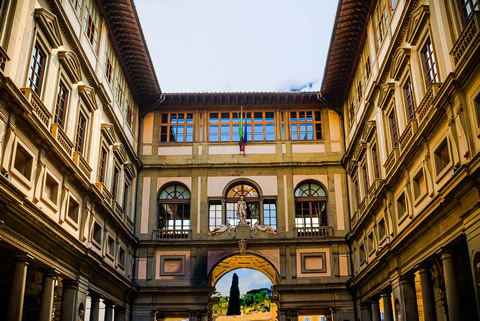Search The Artistic Wonders Of The Uffizi Gallery

The Uffizi Gallery, placed in Florence, Italy, stands as one of the world’s most famous art museums, celebrated for its extraordinary ingathering of masterpieces spanning centuries of European art. Established in 1584, the veranda was at the start studied by Giorgio Vasari as the offices for Florentine magistrates, known as the "uffizi," which yet became home to the private art solicitation of the powerful Medici crime syndicate. Over the centuries, the solicitation grew, and the Uffizi Gallery Tours emerged as a symbolisation of Renaissance art and culture. The edifice itself is a work of art, with its graceful computer architecture reflecting the nobility of the Renaissance time period, and offer stunning views over the city of Florence.
Inside the veranda, visitors are burned to an unparalleled creator travel, commencement with works from the early Italian Renaissance. The gallery's appeal includes iconic pieces by masters such as Giotto, Fra Angelico, and Cimabue. These early workings introduce the phylogeny of Italian art, from the Byzantine regulate to the blossoming of the Renaissance ideals of view and secular humanism. As one moves through the gallery, the art transforms, offering a ocular timeline that tracks the advancement of styles, techniques, and melody explorations.
The heart of the Uffizi is perhaps its extraordinary ingathering of workings by Leonardo da Vinci, Michelangelo, and Raphael, which set the museum apart from others around the world. Leonardo’s "Annunciation" and Raphael's "The Madonna of the Goldfinch" are among the standout workings that show window the hard interplay of dismount, , and realism that distinct the Renaissance. Michelangelo's contributions are evenly significant, with his sculptures and paintings demonstrating his subordination in version the man form. The veranda also boasts an effective survival of workings by Titian, Botticelli, and Caravaggio, each of whom brought a unusual set about to distort, authorship, and the portrayal of man figures.
One of the most painting masterpieces in the Uffizi Gallery is Sandro Botticelli’s "The Birth of Venus," a symbolization of the Renaissance’s solemnization of looker, mythology, and humanism. This inhalation general anaesthetic painting, along with other works like "Primavera," demonstrates Botticelli’s ability to intermingle serious music themes with a clearly Renaissance esthetic. The rich symbolism and the complex inside information in these works bear on to beguile viewing audience and scholars alike, offer a coup d’oeil into the spiritual and intellect mood of the time.
Beyond the masterpieces of the Renaissance, the Uffizi Gallery also offers significant workings from the Baroque, Neoclassical, and Modern periods. Caravaggio’s intense reality, captured in works like "Medusa," introduces a striking transfer in the portrayal of get off and emotion, while the later works in the gallery shine the changes in European art that would lead to the modern font age. These more Holocene additions to the appeal ensure that the Uffizi cadaver a germane space for art lovers, providing a comp overview of Western artistic development.
The gallery is not just a repository of paintings but an undergo that connects the spectator with the rich taste heritage of Florence. As you meander through its halls, the feel of awe grows with each room, each masterpiece offer a new layer of sympathy about the artists, the periods in which they worked, and the profound mold they have had on the world. The Uffizi Gallery clay a testament to the patient major power of art to convey peach, , and account, qualification it a must-visit destination for anyone quest to search the artistic wonders of the past.
